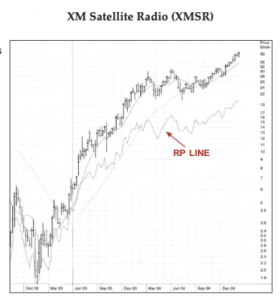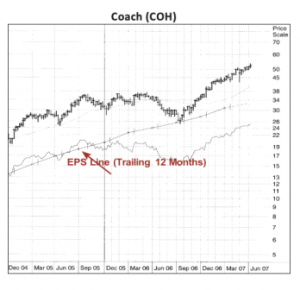It’s what every investor dreams of: finding the next Microsoft, the next Cisco, the next Amazon, the next market leader that will soar five-, 10- or 25-fold. Although finding these home runs is a daunting challenge, it can be done. Even in a pandemic-riddled economy. And we’ll show you how!
Before you even begin to look for monster growth stocks, however, you first need to develop the desire to find and hold on to big winners. It’s natural to want to sell out of a strong stock after a “small” profit of 20% or 30%. But if you truly find a stock that is on its way up 100%, 200% or more, why would you want to sell so early? Many investors owned Microsoft, Cisco or Amazon at one point or another. But few held on for the entire trip higher. So let your winners run!
Back to finding these super stocks. We’ve been examining growth stocks for over 40 years, constantly searching for monster growth stocks to carry our portfolio higher. In that time, we’ve found some, missed some, made some mistakes, and learned from everything. And what we learned was that most of the huge winners had common characteristics … characteristics that propelled astounding advances that just kept going and going!
Below we’ll show you six key traits to look for. The more of these traits your potential purchase has, the better the chance it can mushroom many-fold in price.
Momentum, Momentum, Momentum
First of all, if a stock lacks strong positive momentum (as defined by a steadily rising relative performance (RP) line), then avoid the stock. No matter how much you like a stock, you need other investors to agree with you! If the stock has consistently underperformed the market in recent months, then — at best — your money is better off somewhere else. At worst, something could be quietly unraveling at the company, which will eventually lead to a much lower stock price.
Remember, momentum represents the constantly changing perception of a stock’s future. When the RP line is powering ahead, for six months or more, it’s alerting you to increased sponsorship, as investors bid a stock higher because they perceive the future to be bright. The opposite is also true, with a poor RP line informing you of a darkening outlook by investors.
Beyond the main trend of the RP line, we also like to see an RP line pull back for just a week or two at a time, with each correction stopped by new buying. Steadily rising RP lines often point to intense accumulation, a situation that often leads to continued rapid gains.
Bottom line: don’t jump into a stock — no matter how good its other traits — unless its momentum is positive. In particular, you should favor strong RP lines showing shallow and brief corrections in recent months.
Mass Markets are Key
Once the RP line meets your requirements, it’s on to the fundamentals. To start off, it’s best to search for companies whose products and services address big markets. The bigger the better! Without a mass market to serve, it becomes far more difficult for any company to grow its business two-, five- or 10-fold. How many companies do you know that have served a niche market, yet have grown at stupendous rates for years? Not many.
The mass market could be an old, well-established market, or a new, rapidly developing market. In the first case, the company you’re inspecting must be serving this huge market in a new way. This will allow sales to mushroom as the company takes market share away from others.
XM Satellite Radio (XMSR)
Let’s look at an example. XM Satellite Radio (XMSR) was a little-known stock back in early 2003. But its satellite radio service soon became very popular, and the company
became a household name. Every month, the company was signing up tens of thousands of new subscribers, people who wanted the freedom to listen to the music or talk they wanted, when they wanted. The potential market was in the tens or hundreds of millions, and investors began to discount the possibility of big things down the road.
You can see just how fast XMSR rose during the 2003-2004 bull market. Even though the company was unprofitable, its super-fast sales growth, combined with the huge potential mass market, attracted big-money investors who envisioned big things on the horizon
Therefore, look for companies serving huge mass markets, or rapidly growing newer markets.
Show Me Sales and Profit Growth
Growth companies are named as such for one main reason. They’re growing! All too often, investors fall in love with companies that promise to do something great in the years ahead. Disease cures? Faster data transmission? Cheaper trading methods? We’ve heard them all. Many times, firms that are striving to do such great things never succeed — leaving their shareholders holding the bag.
But we’re not here to tell you what doesn’t work. We’re here to tell you what does. And what points you in the direction of the market’s leaders is powerful sales and earnings growth. It’s true — the late 1990s saw even unprofitable dot-com and biotechnology stocks race to the heavens. However, that period of time was the exception, not the rule. Nowadays, companies showing explosive growth in sales and earnings are the ones attracting the most investment dollars.
Of course, there will be some unprofitable or speculative firms that end up being Wall Street darlings. Some will be worth investing in. But finding rapidly growing companies definitely puts the odds in your favor. In general, we like to see firms growing current sales and earnings at least 30%, though many of our biggest winners were growing much faster … 100%, 200% or more.
Consider Intuitive Surgical (ISRG). It was gaining traction with its revolutionary da Vinci surgical robot, which allowed surgeons more effectively operate, leading to less complications and shorter recovery times. In 2003, the company booked $92 million in revenue, while it posted a loss of $0.15 per share. Within three years, revenues had exploded to $373 million, while earnings catapulted to $2.32 per share. That provided the fuel for the stock’s huge advance in late 2004  and 2005.
and 2005.
An example of less explosive but more consistent growth is Coach (COH), the luxury retailer in the U.S. and abroad. Quarter after quarter, year after year, Coach racked up 25% to 35% sales and earnings gains; take a look at the earnings line in the chart below. Such steady, powerful growth helped the stock enjoy steady, powerful gains during the post-2003 bull market.
Thus, strive to find companies showing terrific sales and earnings growth today. Doing so will put the odds of finding a big winner in your favor.
What’s the BIG IDEA? Revolutionary Product with a Major Benefit
Probably the most important fundamental characteristic we look for in a company is a BIG IDEA. Ask yourself: Is the company offering a revolutionary product? Does it have patents or intellectual property that protect it from competitors? Does this product or service provide customers with a major benefit?
Past studies of our own stock selections tell us that companies providing a revolutionary product or service have made up most of our biggest winners. It’s true! Whether it was Qualcomm’s CDMA wireless technology, (profit 354%) JDS Uniphase’s fiber optic switches, (profit 388%) Home Depot’s unique home-improvement stores, (profit 240%) American Power Conversion’s uninterruptible power supplies (profit 1,000%) Summit Technology’s laser eye surgery equipment, (profit 443%), XM Satellite Radio’s new service (profit 396%), or NetEase’s wireless communication in China (profit 150%), most of our big, big winners were offering something new and revolutionary.
Two things to consider here. First, it’s not easy finding revolutionary products or services. That’s why they’re revolutionary! But that just makes the few you find that much more valuable. Second, the term revolutionary has different definitions depending on whom you ask. That makes it somewhat difficult to classify the truly revolutionary offerings. As a guideline, we like to ask ourselves, is the company’s product or service significantly altering the market it sells to? Is it delivering its product or service in a new, more efficient way? In general, is the company doing something new, giving it a leg up on its competitors? It’s impossible to quantify “revolutionary,” but these questions should help you find the truly outstanding
firms.
So search for companies providing new, unique and revolutionary products or services.
Look for Leaders, not Laggards
Here’s the situation: Let’s say you’ve got a major presentation to make to your boss in the days ahead. If you do well, there’s a good chance you could be looked upon favorably when bonus talks come up at the end of the year. If you bomb, it’s probably going to take a while before you get another chance to impress. Knowing this, do you look for the best data available for your research? Yes! You get the best you can because the payoff is worth it. It’s the same in the stock market.
When buying a stock, you want to search for a true leader in its business. Don’t settle for second or third best! You’re looking for the company with the best products and services, some of the best growth and profit margins (the percent of sales that ends up as profit) and the one making changes in its industry. These leaders are the ones that big investors gobble up, pushing them higher and higher over time. Conversely, the laggards, though they may appear cheap, rarely provide a comparable return.
Oil boom stocks provide a good example of this. Ultra Petroleum (UPL) was one of the biggest market winners during the oil bull market, thanks to an aggressive exploration campaign, and rising prices for both oil and gas. Sales and earnings went through the roof, and the stock appreciated significantly in the few years prior to 2006! Another profitable firm oil explorer was Houston Exploration (THX) … but the stock’s rise was nothing great, and it petered out more than a year before UPL, all due to growth prospects that were sub-par. One was a leader, producing historic gains. The other was a laggard, teasing you that it was “cheap” or “about to come around.”
The moral of the story: Search for true leading companies in their fields. Laggards rarely do as well in the market.
Putting it All Together
Put in a few hours of research and you can find a stock that has one or two of the characteristics mentioned above. And the stock you find may even do well, bringing you a handsome profit. But our goal is to garner big profits, totaling 100%, 200%, 500% or more. It’s these big winners that, over the months and years, make all the difference in your portfolio’s return. Our experience has been that stocks meeting all of the above criteria have a great chance of yielding these superior returns.
So don’t settle for mediocre stocks. Search for companies serving huge mass markets or rapidly growing developing markets. Look for firms displaying extremely rapid sales and earnings growth. Dig deep for revolutionary products and services. Focus on industry leaders, not laggards. And be sure that the company’s stock has strong positive momentum. If it has all of these characteristics, congratulations! You may have found your portfolio’s next big winner.


